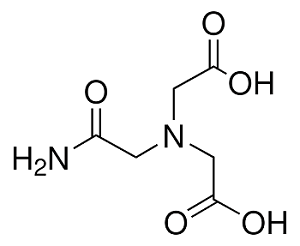Pharmaceutical & Fine Chemicals
ADA

Product Description
ADA (Aminodiacetic acid), with the CAS number 26239-55-4, is a chemical compound utilized in various industrial applications.
Product:
ADA
CAS:
26239-55-4
Synonym:
Aminodiacetic acid; N-(2-Acetamido)iminodiacetic acid; N-(Carbamoylmethyl)iminodiacetic acid
Structure:

Typical Characteristics
Appearance
White powder
Density
1.4957 g/cm3
Melting point
219 °C
Molecular Weight
190.15
Purity
≥98%
Refractive index
1.5010
Uses, Applications & Markets
Key applications
get a quote



ADA used in many
industry applications
ADA (Aminodiacetic acid), with the CAS number 26239-55-4, is a chemical compound utilized in various industrial applications. Here are some of its uses:
- Chelating Agent: ADA is commonly employed as a chelating agent in various industrial processes, including water treatment, metal cleaning, and pulp and paper manufacturing. It forms stable complexes with metal ions, preventing them from precipitating or reacting with other components in the system.
- Pharmaceuticals: It serves as a precursor or intermediate in the synthesis of pharmaceuticals, particularly in the production of chelating agents used in medical treatments such as chelation therapy for heavy metal poisoning.
- Chemical Analysis: ADA is used in analytical chemistry as a complexing agent for metal ions in titration, spectrophotometry, and other analytical techniques to determine metal concentrations in various samples.
- Photography: It may find applications in photographic processes as a component of developer solutions or as a stabilizer in photographic emulsions to enhance image quality and stability.
- Textile Industry: ADA may be used in the textile industry as a dyeing and finishing agent to improve the color fastness, brightness, and softness of dyed fabrics.
- Personal Care Products: ADA is incorporated into personal care products such as shampoos, soaps, and cosmetics as a chelating agent, emulsifier, or pH adjuster to enhance product stability and performance.
- Industrial Processes: It finds applications in various industrial processes, including metal plating, metal cleaning, and electroplating, to control metal ion concentrations and improve process efficiency.